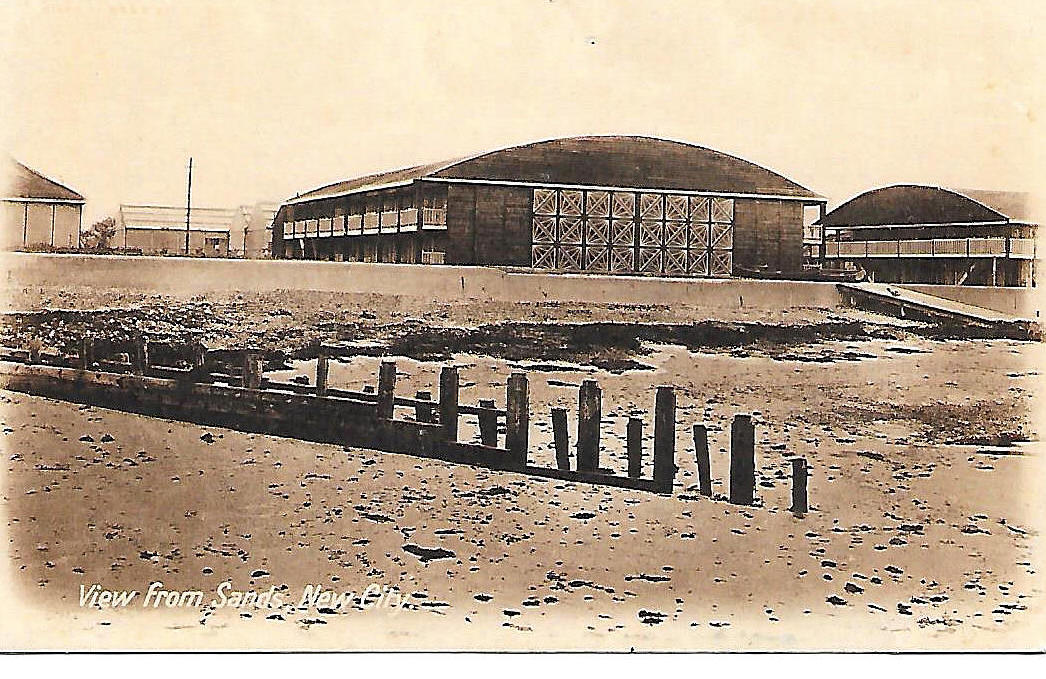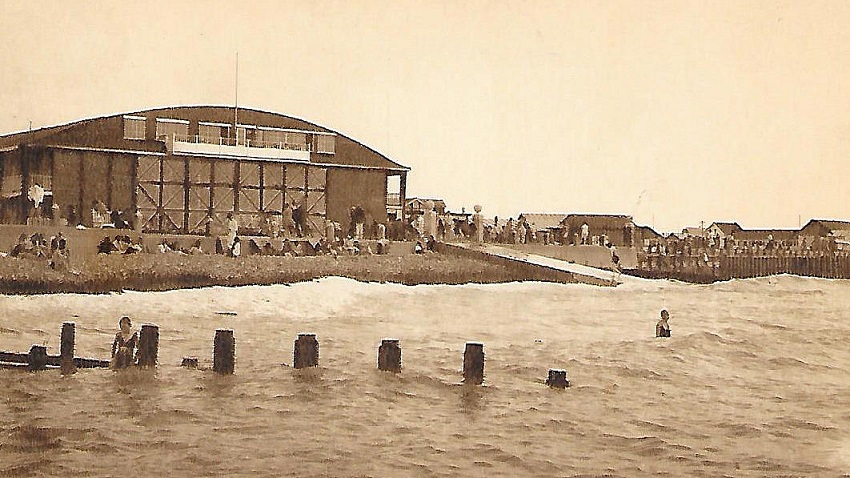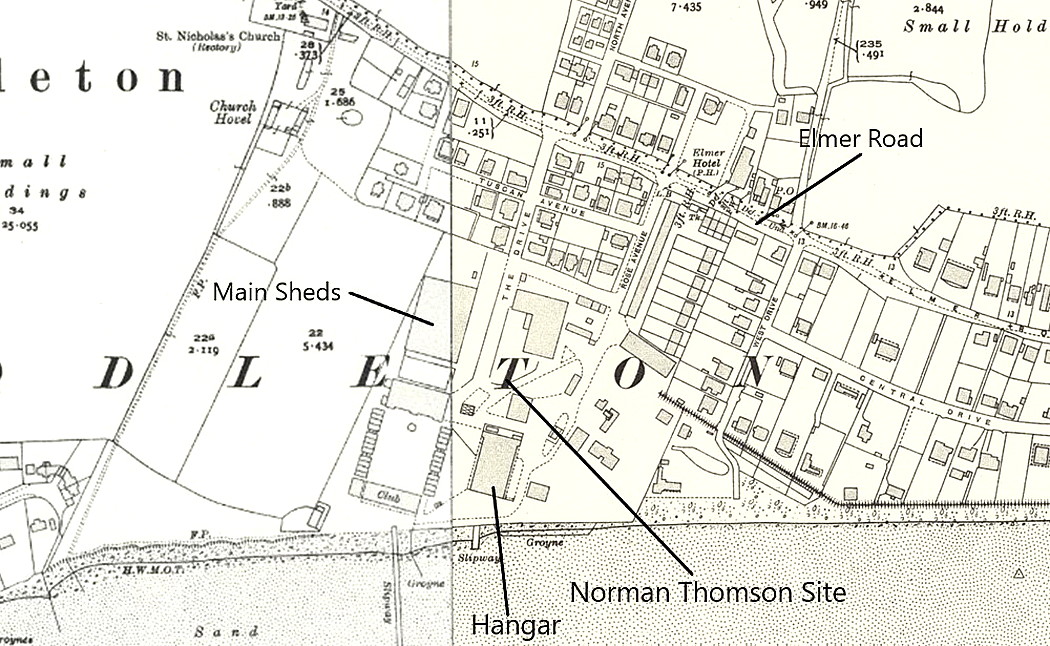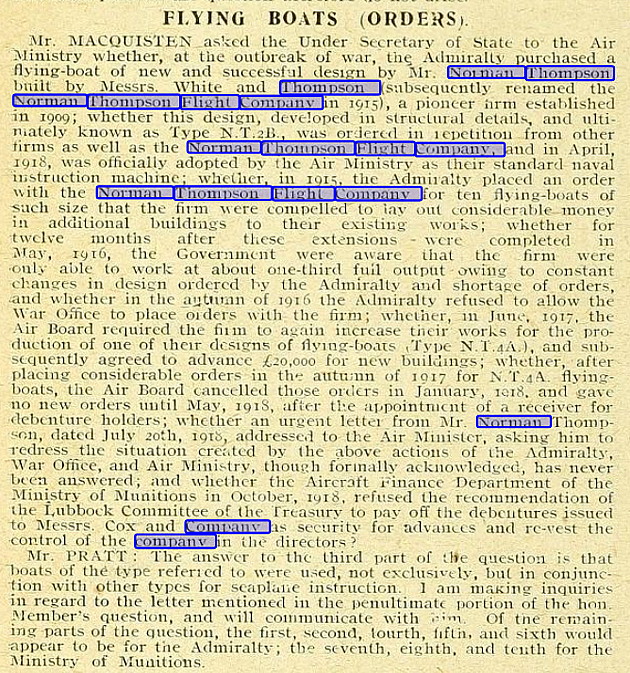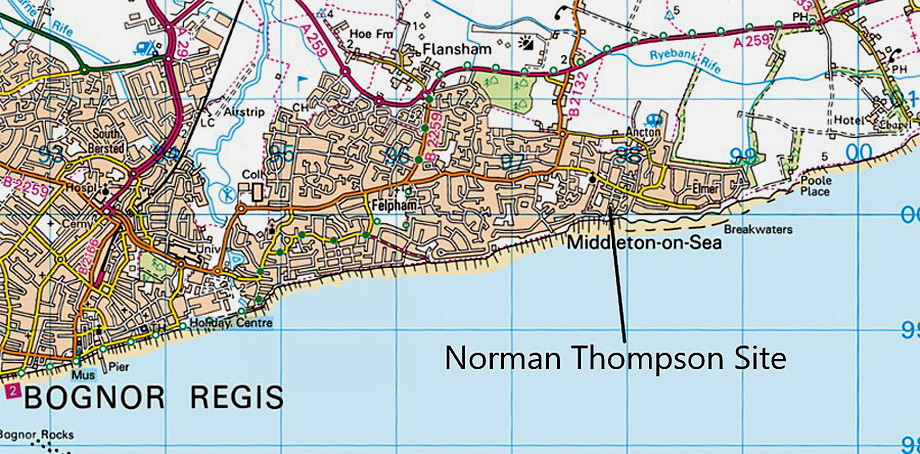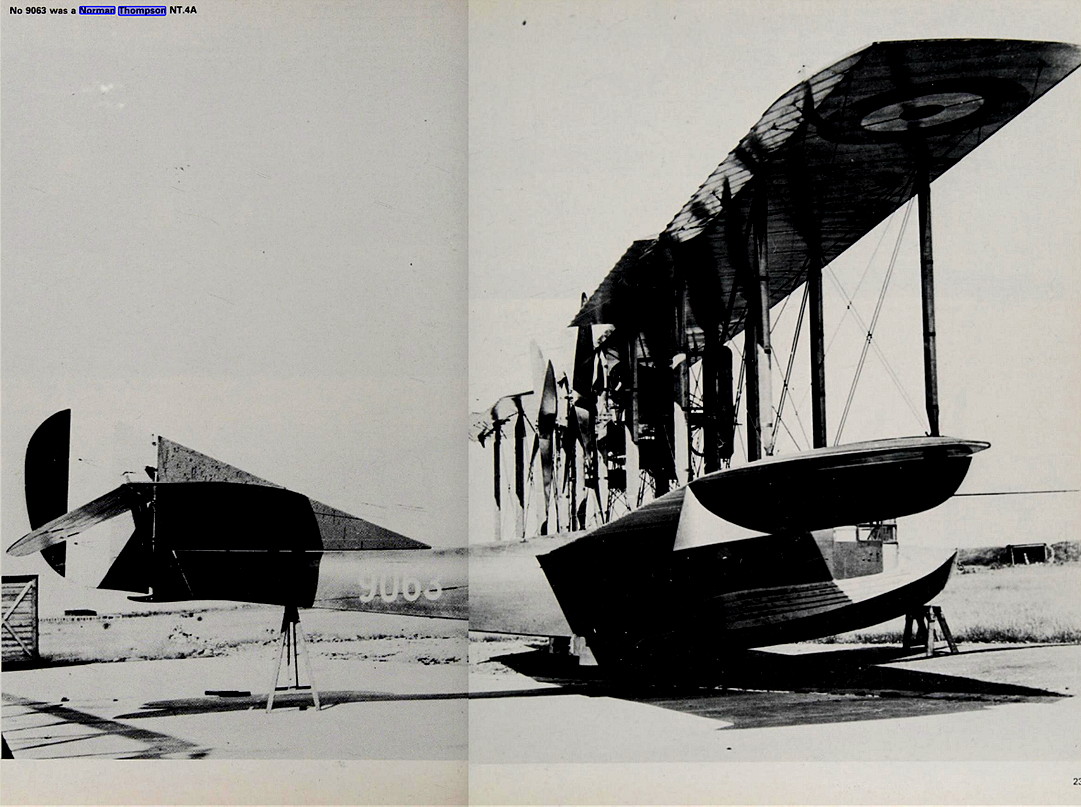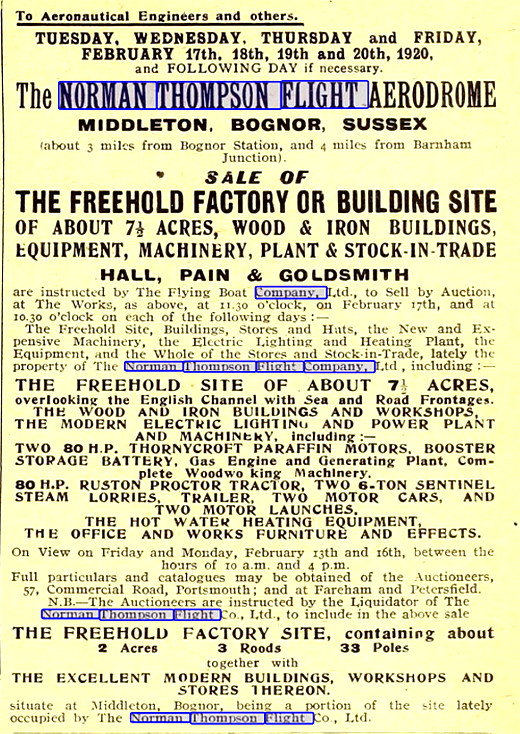Middleton-on-Sea
Note: This map only gives an approximate position within the UK.
MIDDLETON-on-SEA: Civil ‘water’ flying ground (aka MIDDLETON-on-SEA SANDS)
Operated by: White & Thompson Ltd and later The Norman Thompson Flight Co. (Manufacturing)
Note: It appears that Douglas White sold his shares in the company probably before WW1.
Location: In/near Middleton-on-Sea, roughly 2 to 3nm E of Bognor Regis.
Period of operation: 1913 to 1919
NOTES: These two companies had slipways for seaplanes and flying boats.
In his book British Built Aircraft Vol.3 Ron Smith listed White & Thompson as having been established at this location from June 1912 although he mentions the company, “…. had constructed an unsuccessful experimental design in 1910.” He goes on to say, “Its first product was a pusher biplane of 1913." This appears to be the 'The Grey Angel' designed by Frederick Lanchester. It appears that after this had its undercarriage ripped off by taxying onto rocks, Douglas White lost interest and sold his shares in the company.
However, Norman Arthur Thompson persevered, forming the The Thompson Flight Company and this concern became ‘sole concessaires for the Curtiss Flying Boats and Engines.’ It appears that most of their products were both too heavy and underpowered initially at least.
Ron Smith states, “White & Thompson designed a twin-engine flying boat as an entry in the 1914 Circuit of Britain race.” This was the White & Thompson Seaplane No.1 which later served the RNAS with serial 883. Seaplane No.2 was a single engine design, RNAS serial 882. Ron Smith quotes British Aircraft Before the Great War for saying the No.2 first flew on the 1st August 1914. The ‘Type 3’ was a Curtiss-type pusher biplane flying boat and at least seven were ordered by the Admiralty followed by ten ‘America’ types.
It appears that at the outbreak of WW1 the Admiralty commandeered all the aircraft under production. During WW1 the company scaled up production, built new hangars and fitting shops.
Ron Smith also says, “In October 1915 the company was renamed The Norman Thompson Flight Company Ltd,” and gives a production list.
1) Erection of twenty FBA flying boats that were ordered in July 1916 using hulls built in France. (FBA is Franco-British Aviation)
2) Twelve NT.3 ‘Bognor Bloater’ single engine biplanes of their own design used for coastal patrol duties. As Ron Smith quite rightly asks, “Is this the least complimentary name bestowed on a service aircraft?” Well,maybe? The Short Gurnard N229 must compete for the title?
3) More than 130 Norman Thompson NT.2B flying boats, a development of the White & Thompson Type 3
4) More than thirty Norman Thompson NT.4/4A flying boats
5) Up to twenty-four Short S.38, the last being delivered in June 1916
6) A number of one-off designs, examples including RNAS serials N26, N37 and N82
THE FINAL BLOW
After WW1 the company suffered an ignominious closure at the hands of the British Government, “The final indignity was that all work except that already in hand was ‘cancelled without a day’s notice in January 1918’.” Handley Page took over the company and closed the factory in 1919. When auctioned decribed as, “Freehold – The Norman Thompson Flight Co. Aerodrome, Middleton .….7.5 acre site overlooking the English Channel with sea and road frontages.”
A MOST ASTONISHING DEVELOPMENT
Note: These pictures from postcards have been sent by Mike Charlton who has an amazing collection. See, www.aviationpostcard.co.uk
It now appears, thanks to information provided by David Garn via Mike Charlton who has provided the pictures from postcards, that Sir Walter Blount decided to purchase the site and develop it as 'The New City' Holiday Camp, opening in 1921. This was designed to appeal to wealthy Londoners and had all the most modern facilities. Plus, undercover parking for 100 cars for which the chaffeurs could be accommodated in the staff quarters.
Looking at the pictures, obviously our tastes have since changed for a desirable holiday resort!
Nevertheless I was surprised to discover that even as late as 1990, Warner Bros were still operating the site. They then sold it to property developers who demolished everything, stating that the hangars were beyond repair. The resulting housing estate is known as 'Saxon Reach'.
A MICHAEL T HOLDER GALLERY
We have Mike Holder, a great friend of this 'Guide', to thank for delving into this subject and providing us with the following:
The photograph + caption is of the White & Thompson No.1 seaplane. It is of some interest, (to me at least), to see how the terminology has changed over the years. Today a seaplane is an aeroplane mounted on floats, as opposed to an aeroplane that floats on its hull, which we now describe as a flying boat. I have no idea when the distinction started, but expect it evolved over many years? Possibly originating in WW1?
The second photograph + caption is of the White & Thompson No.2 seaplane, whereas the third photograph + caption is of the Norman Thompson N2C. The magazine article was published in The Aeroplane on the 28th May 1919.
The photo above is of the Norman Thompson NT4A. The advert was published in The Aeroplane on the 28th January 1920. The local area view is from my Google Earth © derived database.
NOTES: It was whilst making this listing that it occurred to me that the most successful and enduring manufacturers of flying boats were all located in the south of England. Short Brothers at Rochester in Kent, Supermarine in Southampton, and quite nearby, Saunders Roe on the Isle of Wight. I find the history of flying boats fascinating. For a decade or two, prior to WW2, for long haul travel, the flying boat reigned supreme.
No doubt using rose tinted spectacles, imbued with a nostagia chip installed, (possible today?), to me the idea of traversing the world in a big flying boat is stuffed full of romance, adventure and, at the time of the late 1930s, the height of luxury. But, of course. a mode of travelling I could never have afforded. A bit like watching Fred Astaire and Ginger Rogers doing their dance routines in that era. Something to marvel at, but quite unattainable for the vast majority.
We'd love to hear from you, so please scroll down to leave a comment!
Leave a comment ...
Copyright (c) UK Airfield Guide














